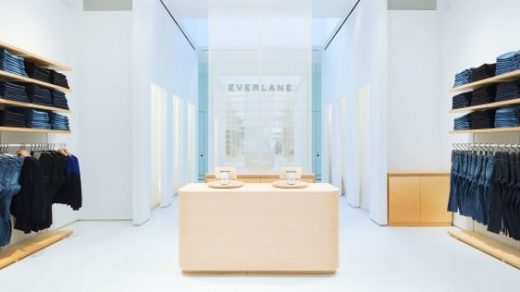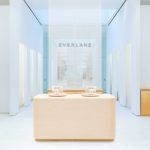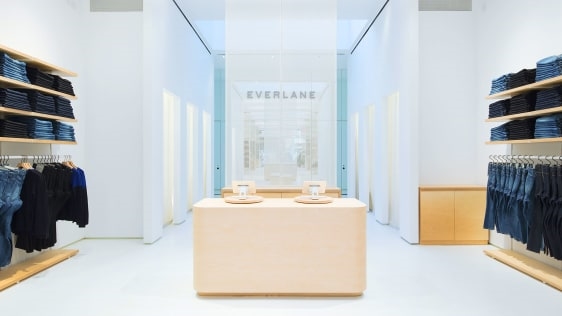Everlane’s First-Ever Physical Store Takes “Radical Transparency” Literally
Back in 2012, when Everlane was just a year old, founder Michael Preysman made a grand pronouncement to the New York Times: “We are going to shut the company down before we go to physical retail.” Yet here we are, five years later, and the clothing brand is opening its first retail store at 28 Prince Street in New York’s Nolita neighborhood.
To be fair, Presyman wasn’t the only one who didn’t see the point of bricks and mortar. Retailers are shutting down stores en masse, as consumers have shown less appetite for shopping at malls in an era when they can buy everything they need from the comfort of their couch. This year alone, a record-breaking 6,700 stores are shuttering, which is more than even after the 2008 recession.
And yet, dozens of brands that were born on the internet have chosen to enter physical retail. Bonobos, Warby Parker, Birchbox, M.Gemi, Cuyana, Glossier, and Allbirds, among many others, now have hip stores that serve not just as places for people to buy product, but also as gathering spots for people who feel an affinity to the brands.
Today, Everlane joins them. Preysman explains that customers had been asking for a store so they could try on products to get a better sense of their size. This was also good for Everlane, since there has been a spike in returns, particularly as it has gone into categories like shoes where there is little wiggle room with sizing. He’d also noticed that customers wanted the instant gratification of being able to return a product in-store so they could pick up a new product and take it home immediately.
A Glass Act
From the start, Everlane’s ethos has focused on being transparent with customers about its supply chain–including how much it costs to make each product, and by extension, how much of a markup it is charging. In the New York store, Preysman wanted to translate this concept of transparency into physical form.
“We wanted there to be a lot of glass,” Preysman says. “We wanted people on the street to be able to see right into the store and get a sense of our aesthetic and what we stand for as a brand.”
At the very front of the store is stadium seating so customers can sit down and relax. The space was also designed to be multifunctional, since Everlane plans to use it to host panels, community events, and art installations.”We were very deliberate about not putting product in the windows,” he explains. “Our brand is centered around people, and that is what we want people to see when they look in.”
But one of the most exciting aspects of this store is invisible to customers. Everlane has designed its own point-of-sale system from scratch that creates a connection between a customer’s online profile and their shopping behavior in-store. Before a customer pays, they will be asked to sign in using the same email address they use on Everlane.com–if they have one–and they will be able to pay with the credit card on file. Online, it will be possible for customers to check whether the item they want is available in their size in the store. Back at Everlane’s headquarters, number crunchers will parse through all this data to figure out exactly how customers shop, so they can improve the experience both online and in-store.
Taking the time to build out this new technology was worth it, Preysman says, because it will be rolled out across many stores. Everlane is slated to open a San Francisco store in February of next year, with the distinct possibility of other stores opening across the country in the near future.
Fast Company , Read Full Story
(20)








